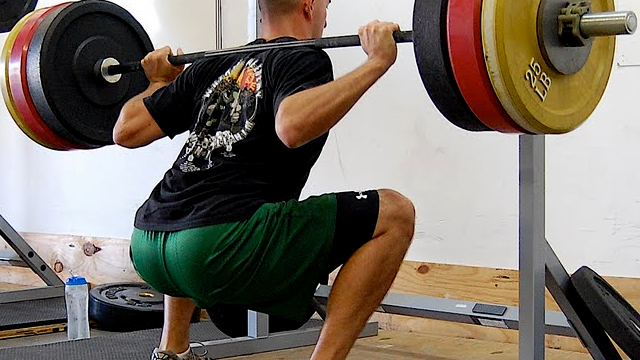Lifters have been using bands and chains to help improve their bench press and squat for a long time now. These are used to help train the lifter to overcome sticking points and to overcome the inherent limitations of free weights (namely that the weight is easier to lift once the lifter gets past the sticking point). Some lifters use bands for deadlifts, but you don’t see this as often.
Bands and chains do not have a rich research basis as of yet. In the literature they are called “variable resistance training.” Galpin et al, in the December issue of the Journal of Strength and Conditioning Research, examined the impact of different band/no band loading protocols on the kinetics of the deadlift exercise.
This study used resistance-trained males who were able to deadlift, on average, 220% of bodyweight. Subjects were analyzed performing the deadlift with either 60% of maximum of 85% of maximum with just weights or with bands added. When using bands, either 15% of the total resistance came from the bands or 35% came from the bands.
Results:
- As the weights increased across all conditions; peak velocity, average velocity, peak power, average power, and relative power all decreased.
- Band conditions resulted in greater peak velocity, average, velocity, peak power, average power, and relative power than just weights.
- The bands equivalent to 35% of the resistance resulted in a greater peak velocity, average velocity, peak power, and average power than free weights only or bands equivalent to 15%.
These results make a lot of sense. As the weights get heavier we’re going to move them more slowly – so this explains the decreases in velocity and power measurements. With regards to the bands, it needs to be kept in mind that bands provide very little tension on the deadlift during the beginning of the lift and most of the tension will be applied towards the top of the lift. In other words, if 15-35% of the weight is being applied by the bands, that’s weight at the top of the lift. This means that the lifter can move the bar more quickly until the band tension kicks in – so this is why velocity and power are enhanced for the band conditions. The more of the weight that is supplied by the bands, the less weight is on the bar at the beginning of the lift. The velocity and power are increased, but force production is decreased – so there is a trade off here.
One way of looking at these results is that bands can be used on deadlifts to increase velocity and power production, so if our training phase is focused on this then we can use bands to enhance power. However, if we just reduce the load on the bar we’re able to achieve the exact same effect (i.e. move the bar more quickly).
Bands are problematic with the deadlift. Many power cages and bench presses are built today to accommodate bands. However, the deadlift is performed on the floor or on a lifting platform. To use bands you would need something on the floor to secure them to and, unless you have a specially made platform, that’s difficult to do. In addition, regular-sized bands tend to be too long to be used effectively on a deadlift, which is why many powerlifters use mini bands for the deadlift (it’s unclear from the article which the authors used).
I applaud the authors for using resistance-trained subjects and for a study on bands, we need more of these. It would be interesting to see the impact of a multi-week program using these bands on deadlift performance as well as power measurements (like the vertical jump, long jump, etc.).
Galpin, A.J., et al. (2015). Acute effects of elastic bands on kinetic characteristics during the deadlift at moderate and heavy loads. Journal of Strength and Conditioning Research, 29(12), 3271-3278.



